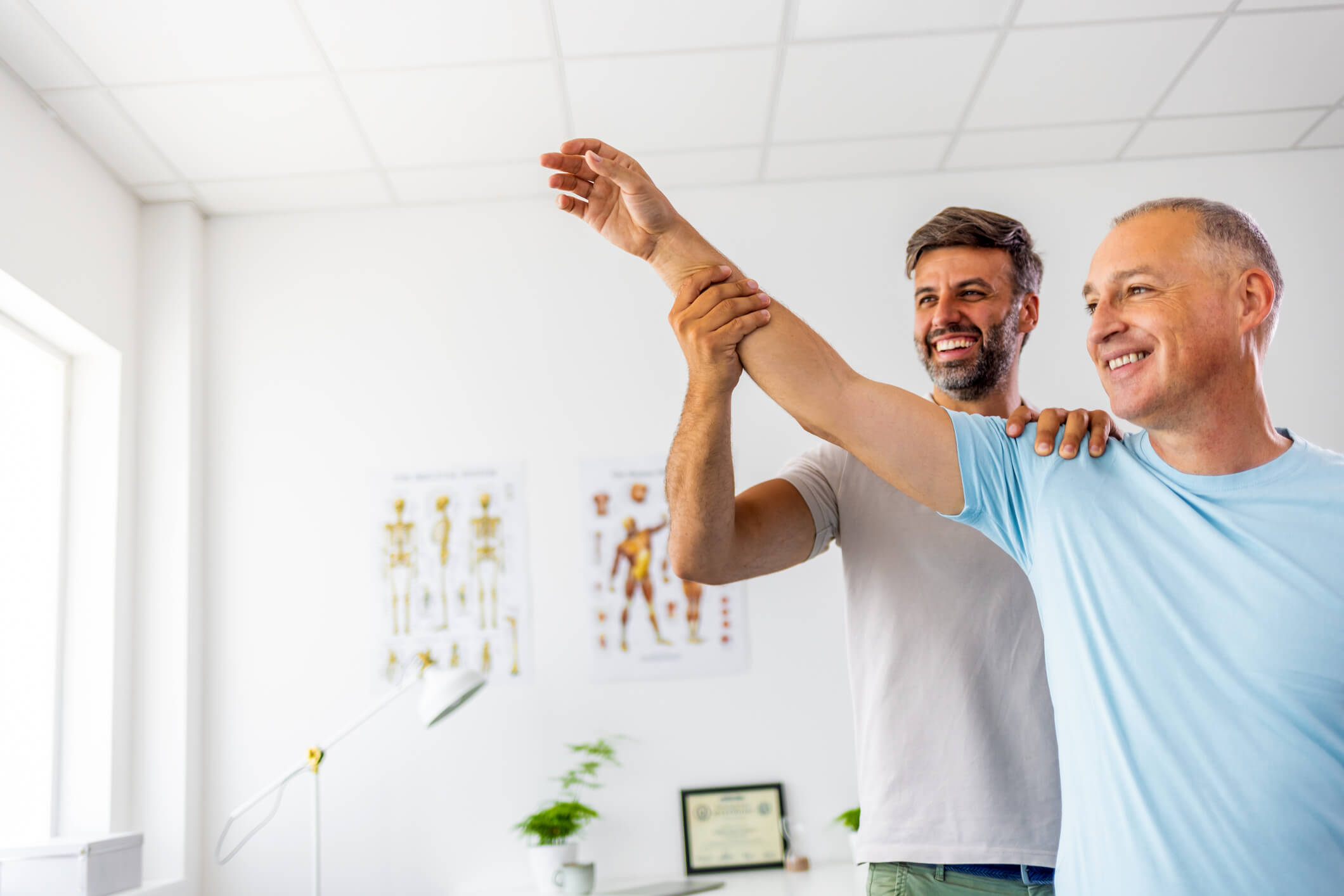Your elbow is a joint that’s essential to many movements that you complete throughout the day, from reaching up to grab something from a shelf to opening a door. So when you feel an ache when you try to extend your elbow, it can interfere with your ability to carry out your daily responsibilities.
There are a variety of reasons that your elbow is hurting when you extend it, such as an injury or a medical condition. While it may be tempting to grin and bear elbow pain in hopes that it goes away on its own, it’s important to learn about the possible cause for the ache. Then you can make sure that it’s properly treated.
We’ll talk about possible reasons that your elbow hurts when you extend it as well as treatment options that you can explore with physical therapy.
Potential reasons that your elbow hurts when you extend it
Your elbow is a hinge joint that connects the forearm to the upper arm. Since it gets put through a lot on a daily basis, it’s not uncommon to feel elbow pain every now and then. If you lean on your elbows for an extended period of time or try a new sport that requires repetitive arm movements, it’s possible to feel temporary elbow pain.
If your elbow constantly hurts when you straighten it, it’s possible that you’re experiencing an injury or a medical condition that requires further treatment. Sports injuries and repetitive strain injuries are both common sources of elbow pain.
Here are some potential reasons that your elbow hurts when you extend it:
- Tennis elbow — Lateral epicondylitis, commonly known as tennis elbow, refers to irritation of the tendons and muscles of the elbow from overuse. It’s caused by repetitive wrist and arm movements. The main symptom is pain on the outside of the elbow that can make it difficult to extend your arm.
- Golfer’s elbow — Medial epicondylitis, commonly referred to as golfer’s elbow, is a type of tendinitis that’s caused by excessive or repetitive force during wrist and finger motions. The stress can cause the tendons to become inflamed, resulting in pain both on the inside of the elbow and down the arm.
- Biceps tendinitis — Another possible type of tendinitis that can affect the elbow stems from the biceps tendon. The tendon connects the inside of the elbow joint to the biceps muscles. It can become inflamed from repetitive arm and shoulder movements or sudden injury. The main symptom is pain from the upper arm down to the elbow.
- Bursitis — There’s a fluid-filled sac in the elbow, called the olecranon bursa, that protects the tendons from the bones and muscles. The bursa can become inflamed from trauma or prolonged pressure, causing pain and swelling from the additional fluid that builds up inside it.
- Nerve entrapment — Your ulnar nerve travels from your neck down to your hand to help with movement and sensation. This nerve can become irritated or compressed from repetitive compression or prolonged elbow flexion. This can lead to cubital tunnel syndrome, which causes pain on the inside of the elbow.
How physical therapy can treat pain while extending your arm
Not being able to extend your elbow without wincing in pain can interfere with your overall quality of life, which means it’s important to learn about the different treatment options that are available. A physical therapist can use techniques that reduce your pain as well as improve the overall function and mobility of the hinge joint.
A physical therapist will evaluate your symptoms to determine the cause of your pain before creating a treatment plan that will best fit your needs.
Some physical therapy treatment options to alleviate elbow pain include:
- Soft tissue mobilization — A common manual therapy technique for elbow pain is soft tissue mobilization. The physical therapist moves their hands in massage-like motions to feel for scar tissue surrounding the muscles and tendons. Then they gently break it up to release the painful tension.
- Stretches — If your elbow pain flares up during extension, it’s important to improve the joint’s range of motion. Your physical therapist will show you stretches that will increase the area’s flexibility and overall mobility.
- Strengthening exercises — It’s important to strengthen the muscles surrounding the elbow joint to keep it stabilized and properly functioning. A physical therapist will walk you through safe and effective exercises that will increase the area’s strength. By strengthening your elbow muscles, you also reduce the risk of future injury.
Whatcom Physical Therapy can help when you feel elbow pain when you extend it
While some causes of temporary elbow pain can be brushed off, feeling an ache every time you try to extend it is a call for treatment. A physical therapist can help diagnose the issue, such as tendinitis or bursitis, before utilizing techniques that can decrease the pain and increase the elbow’s overall function.
Contact our team today for more information or to schedule an initial appointment.






